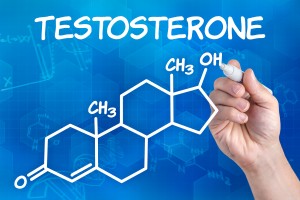-
Health & Wellness
Tuesday Q & A: Mildly low level of testosterone typically doesn’t require treatment
DEAR MAYO CLINIC:
I am a 52-year-old man. I recently had blood work done that showed my testosterone levels are slightly low, falling just below the “normal” range. Should I talk to my doctor about getting treatment even if I don’t have any symptoms? What are the side effects of prescription testosterone?
ANSWER:
A mildly low level of testosterone alone, without any signs or symptoms, typically does not require treatment. But it would be a good idea for you to talk with your doctor in more detail about this test result. In some cases, low testosterone may be a sign of an underlying medical concern, or it could be a side effect from medication.
Testosterone is a hormone produced primarily in the testicles. Testosterone helps maintain men’s bone density, fat distribution, muscle strength and mass, red blood cell production, sex drive and sperm production. The normal range for testosterone is wide, and men’s testosterone levels usually change throughout their lives.
For most men, testosterone peaks during adolescence and early adulthood. Then as men get older, testosterone levels gradually fall — typically about 1 percent a year after age 30. In a situation like yours, it is important to find out if low testosterone is a result of normal aging, or if it could be due to a medical problem.
A significant decline in testosterone levels can cause symptoms. Fatigue and low sexual interest are the most common. Some men also see changes in beard and body hair growth. Muscle wasting and a decrease in muscle strength can be a result of low testosterone, as well. Erectile dysfunction, or ED, can occur with testosterone deficiency. But, overall, low testosterone is not a common cause of ED.
Disorders that may lead to low testosterone include hypogonadism, rare conditions of the testicles or the pituitary gland in which the body does not make enough testosterone. Other conditions that can affect testosterone levels are thyroid problems, obstructive sleep apnea, depression and excessive alcohol use.
Follow-up tests and exams usually can show if a medical condition may be contributing to low testosterone. Your doctor also should review any medications you are currently taking to see if one of them may be the source of the problem. If an underlying medical condition is identified, treatment for that disorder may be all you need to bring your testosterone level back into the normal range.
Testosterone replacement therapy may be recommended to treat hypogonadism. Apart from that, testosterone usually is not recommended for older men who are otherwise healthy, even if their testosterone levels are slightly below what is considered normal.
Taking prescription testosterone does have risks. It may stimulate noncancerous growth of the prostate, cause enlarged breasts, limit sperm production and accelerate growth of existing prostate cancer. In some men, testosterone therapy can worsen sleep apnea. Recent studies also suggest there may be a link between testosterone therapy and an increased risk of heart disease, but more research is needed to confirm this.
If after further evaluation your doctor recommends you take testosterone, it is important you set up a monitoring plan with regular blood tests to make sure the prescribed dose is correct. Too much testosterone can result in an increase in red blood cell production, a condition known as polycythemia. That can lead to other problems, including blood clotting and stroke.
In your case, because you are not experiencing any symptoms of disease, it is unlikely that testosterone therapy is necessary at this time. Talk with your doctor, though, to find out if additional follow-up testing or evaluations could be useful to better understand the cause of your low testosterone. — Todd Nippoldt, M.D., Endocrinology, Mayo Clinic, Rochester, Minn.







